Can We Cover A Concrete Slab With Decorative Stone?
DIY with WI
Nosotros're here to help you take the difficult out of hardscaping.
Subscribe
When you want to larn how to overlay concrete with paving stones, you've come to the correct place. This article volition show yous step-by-footstep how to dress up an quondam, croaky, or unwanted concrete patio by roofing it with prissy, middle-appealing pavers.
You'll desire to consider a couple of things when doing a paver overlay on physical.
- Make sure yous have the proper ground clearance for your pavers around your siding or any pillars.
- If any steps are involved, consider whether or non you want to overlay them likewise.
Supplies Needed
To install patio pavers over an existing concrete slab, you're going to need some tools and materials.
Tools:
- Rubber mallet
- Measuring record
- Level
- Box knife
- Shop broom
- Oscillating or round saw
- Concrete saw
Materials:
- Stakes
- Stringline
- Sweeping sand
- Joint sand
- Geo textile
- Agglutinative
- Slimline pavers
Supplies Needed
i. Inspect your existing physical for large cracks, dips, or rises
The first step to overlaying your concrete with paving stones is to inspect your physical. Consider the post-obit:
- Cracks: Make sure there are non whatsoever major cracks. If there are just a few hairpin cracks, you lot'll probably be okay.
- Gradient: You desire to make sure the gradient is adequate. The goal is to either encounter or exceed the Interlocking Concrete Pavement Institute (ICPI) standard of a 2% slope grade. This ensures that any h2o accumulating at the top of your patio or covered expanse will bleed properly off of it.
- Threshold: Brand sure whatever threshold, siding, or pillars around your concrete area volition clear the thickness of the paving stones you're adding.
- Clean: Brand certain your concrete is perfectly clean and then that whatever type of adhesion method you employ, whether physical, caulk, or mortar, will adhere well for longevity.
2. Comprehend your patio face with a wall block (optional)
This step is optional and worth considering for any projection that has a concrete face you want to cover.
Specific to our project and design, we're facing the front of this porch with a wall block. We covered the concrete with some Chateau Moderna wall blocks (adhered using mortar) to improve the wait.
On the side, where at that place'south a step, we're laying 1 course (or layer) upright. This is to match the same height equally the ones in front of the step and then information technology continues throughout.
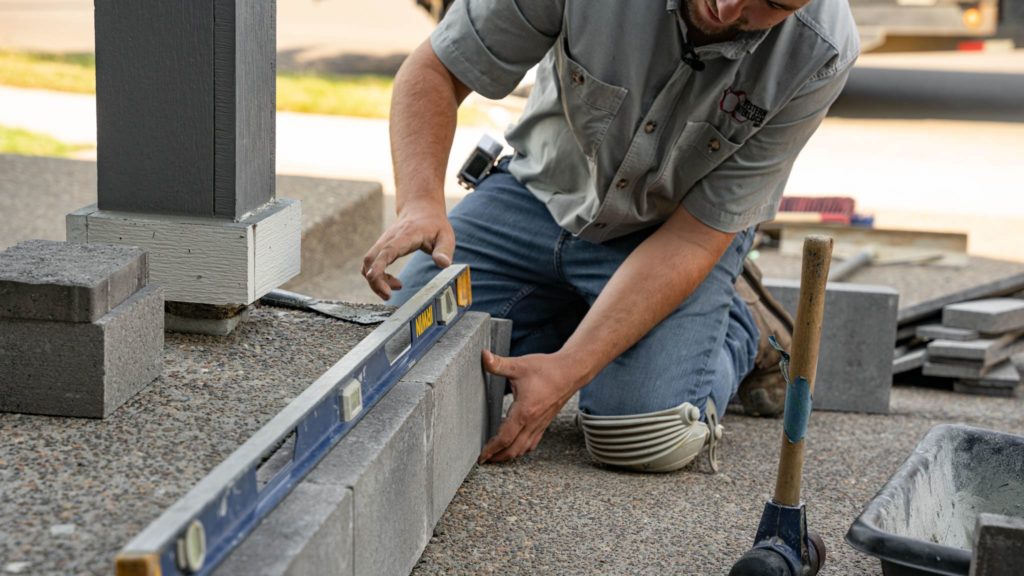
Because we're working with a sloped driveway we want to confront the perimeter of the porch. In that location'due south an area here with a large void because of that gradient. Nosotros're building information technology up with mortar then bringing our blocks up so the border sits flat and the pavers tin can overlay right on elevation.
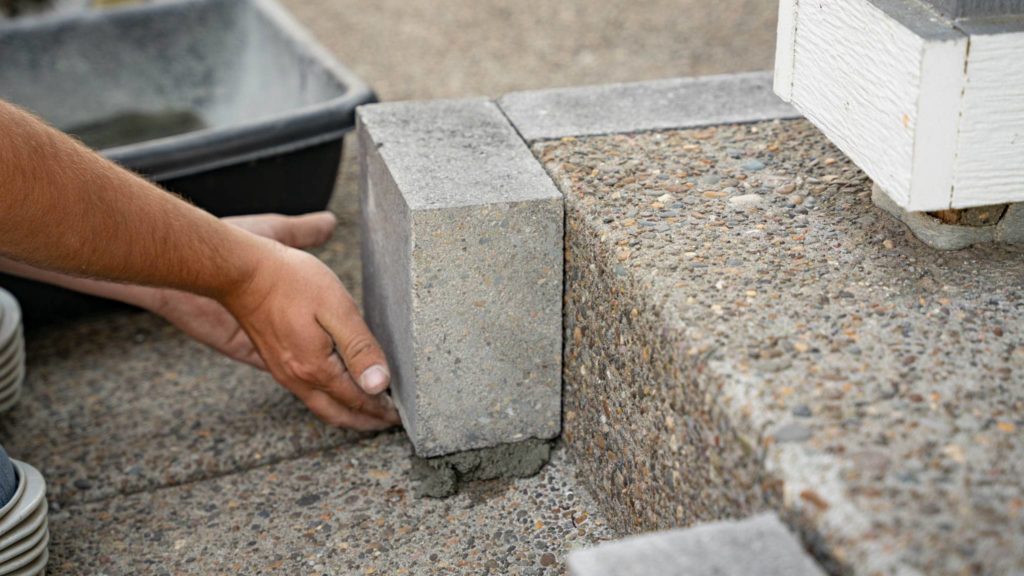
We glued and mortared that cake onto the face, merely continuing past that point we hitting clay. Then we dug a trench and laid a proper base before placing the pavers.
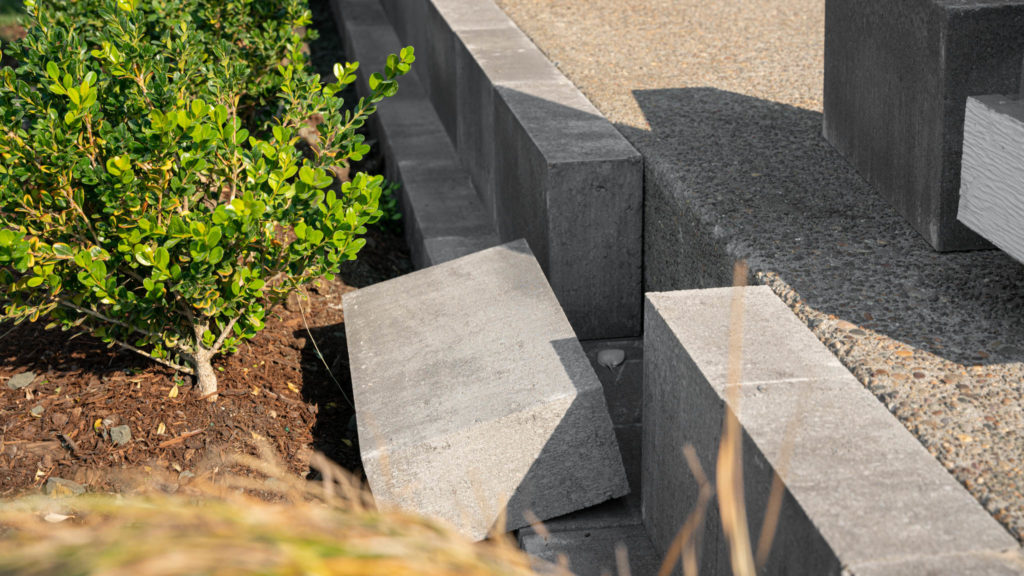
Nosotros put in at to the lowest degree four inches of gravel for a stable base. We laid ane form flat for more stability, then the other vertical to match the height of the concrete patio.
3. Install a patio paving stone border with adhesive
Next, you'll want to glue your paver border to the outside perimeter of the concrete surface area that you're going to overlay. Since we placed a wall block to the confront of our concrete, we're gluing the paver border to the top of that.
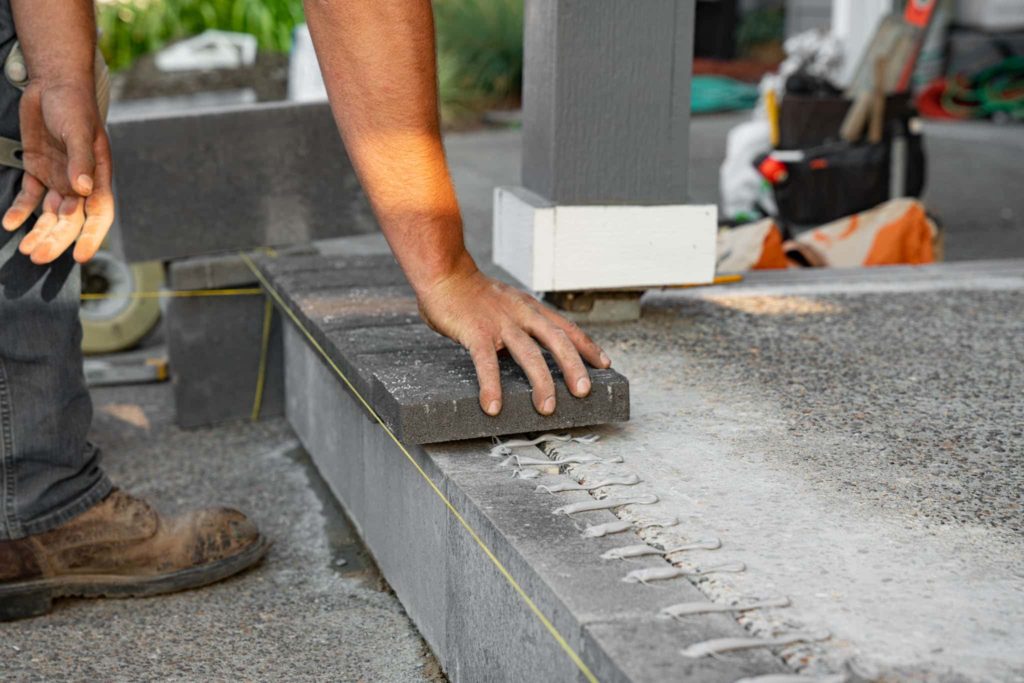
We recommend using SEK SB-20 Flex-Bail Adhesive. This is a high-strength hybrid adhesive combining the flexibility of silicone and the bond strength of polyurethane.
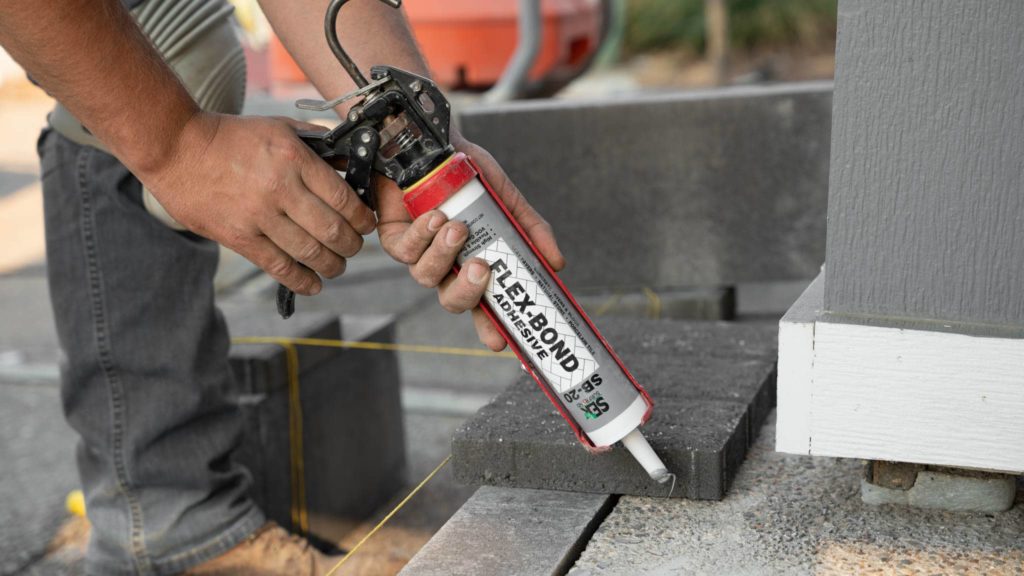
Its solvent-free formula provides superior immovability to withstand the most extreme service conditions. SB-twenty Flex-Bond's loftier viscosity helps y'all level and shim coping and caps.
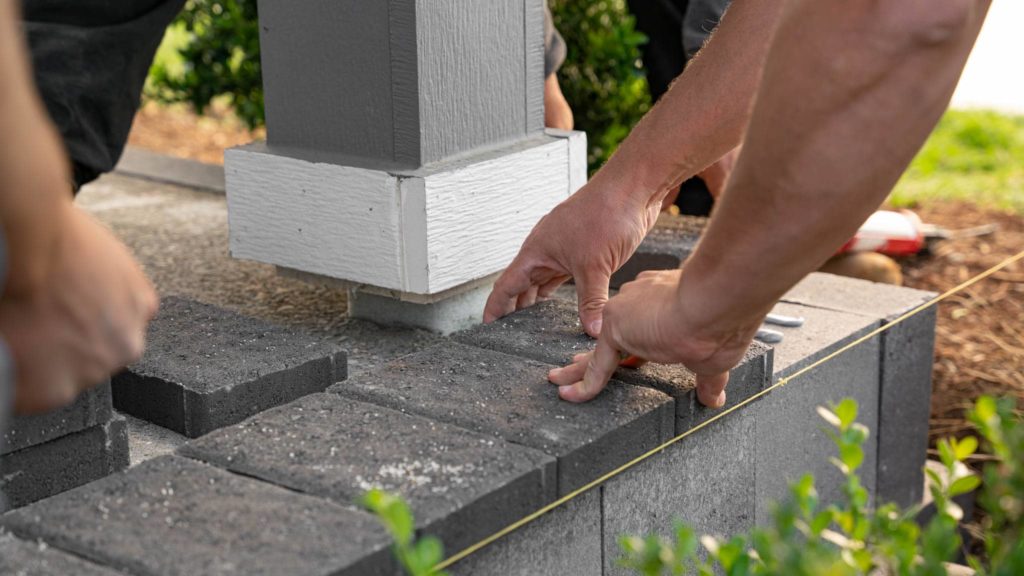
It applies hands with a standard caulking gun to unfrozen surfaces, wet or dry. SB-twenty Flex-Bond's wet cure system achieves full cure in 24 hours.
4. Lay geo filter textile over your concrete
The main purpose of this geo filter is to retain whatsoever joint sand that might try to settle through the paving stones. It besides helps retain any bedding sand used to split up the difference of humps and bumps in the concrete.
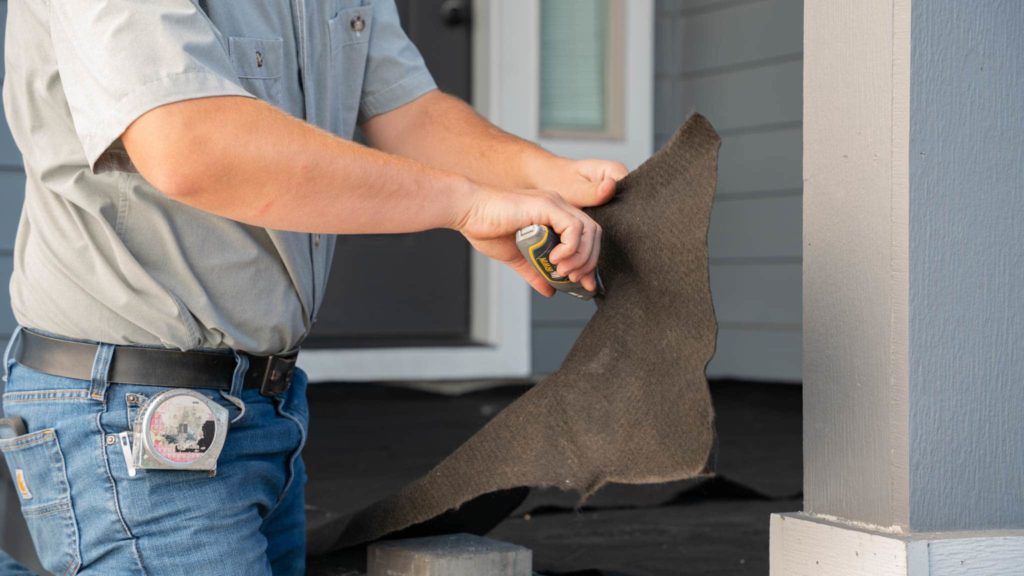
You'll want to cut it to size, trying to keep information technology in 1 piece as much as possible. If yous need to cut smaller pieces for corners or to get around posts, just leave some overlap then y'all don't take any exposed concrete.
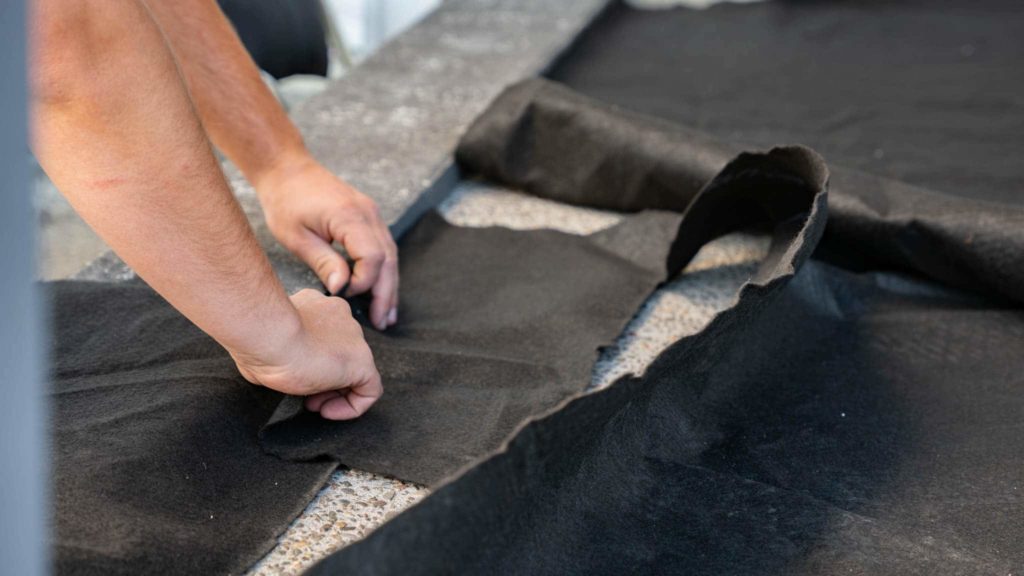
You'll also demand to brand sure you lot run the geo textile up the sides of your border, including side by side to your house, if applicable, to keep whatever sand from migrating beneath the textile in the side by side step.
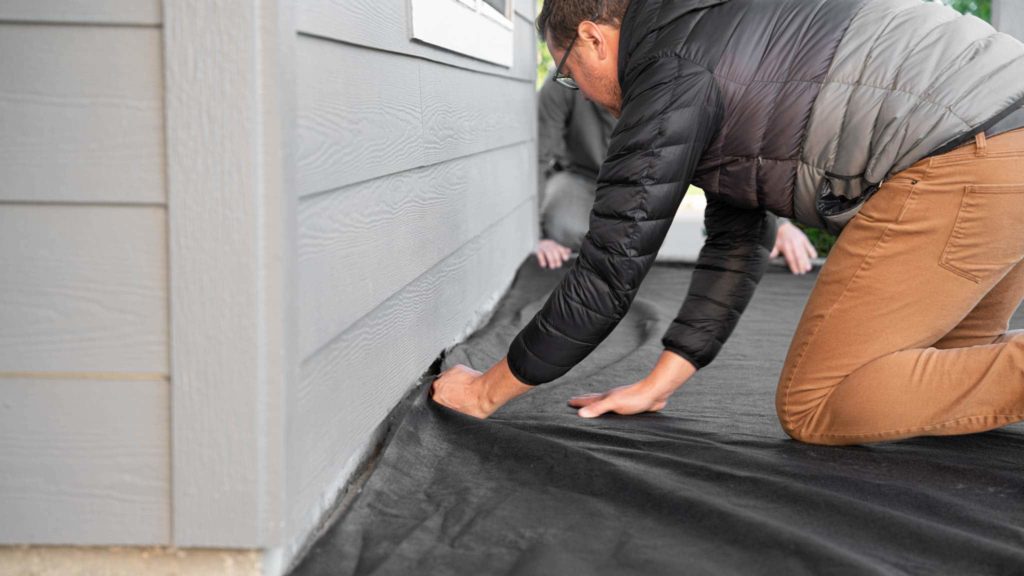
5. Spread a sparse layer of sand over your filter material
Put a very thin layer of sand down to divide the filter fabric from your pavers. For this step, we used Basalite #ane Fine Sand. It has been screened to provide optimum filtering capacity and creates a polish finish for various concrete applications.
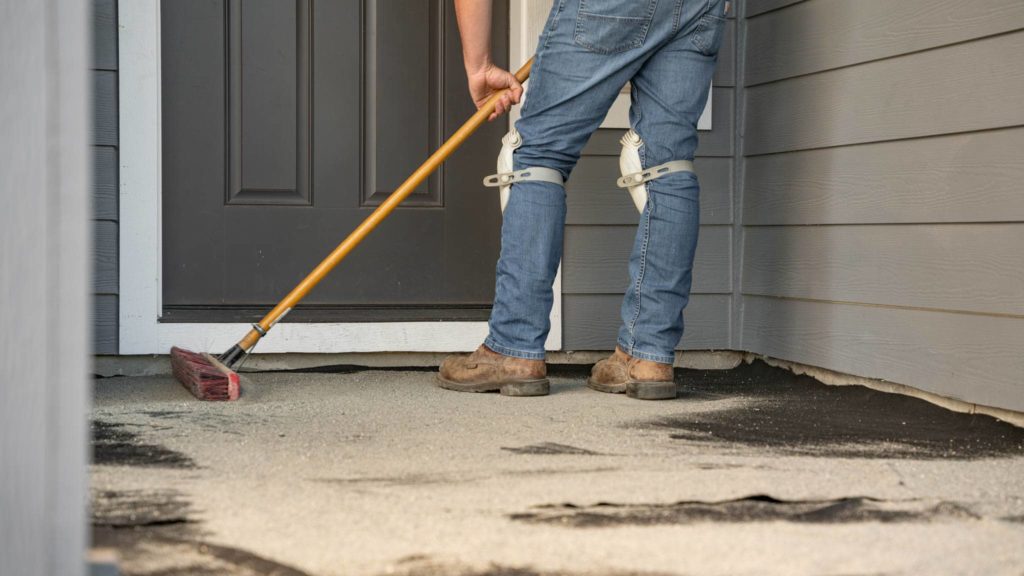
While the bedding layer is here to help bridge any imperfections in the physical, it's essentially in identify to help reduce moisture transferred through the filter fabric, which can absorb to the paving stones and promote efflorescence.
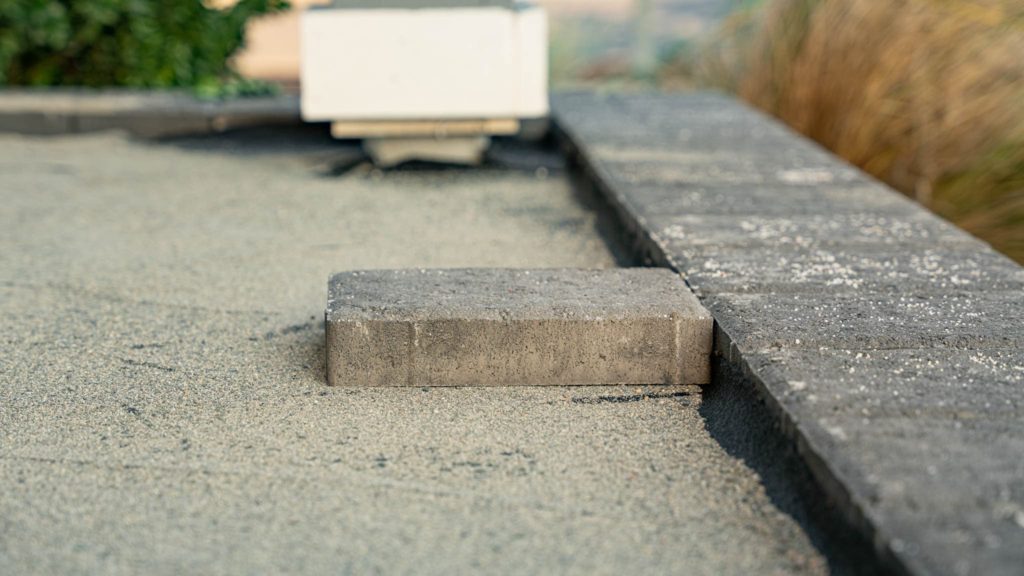
6. Lay patio paving stones or slabs over the bedding layer
At this point, information technology's time to lay your field with pavers. You'll want to start in a corner and piece of work your manner around the border toward the heart.
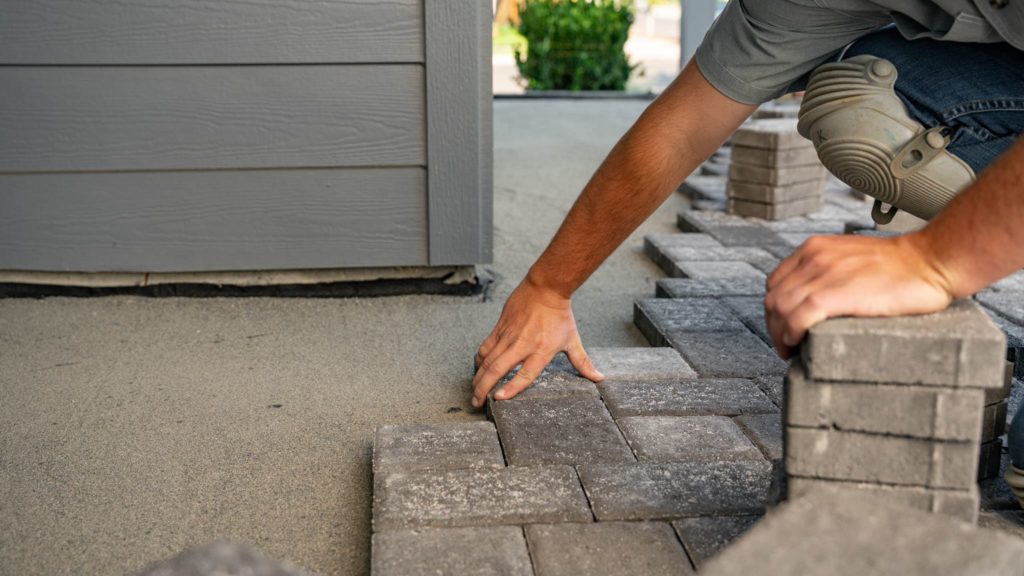
Be sure to apply the Click and Drop method then you lot don't bulldoze your thin layer of sand. This will upshot in an uneven surface.
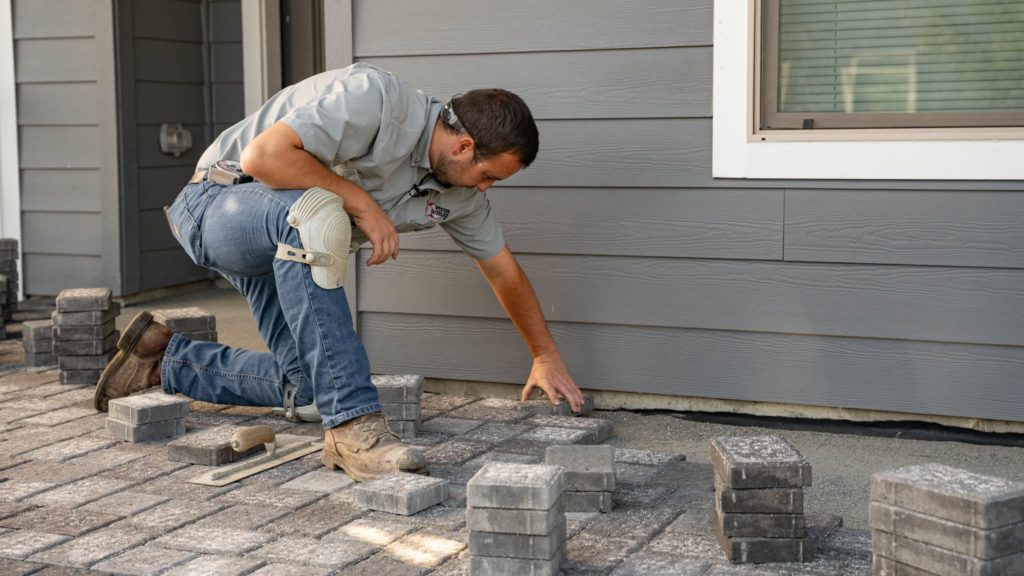
Y'all'll probable demand to make a few cuts along any structures or posts. Refer to our tutorial 6 Ways to Cut Paving Stones to ensure you follow safe methods.
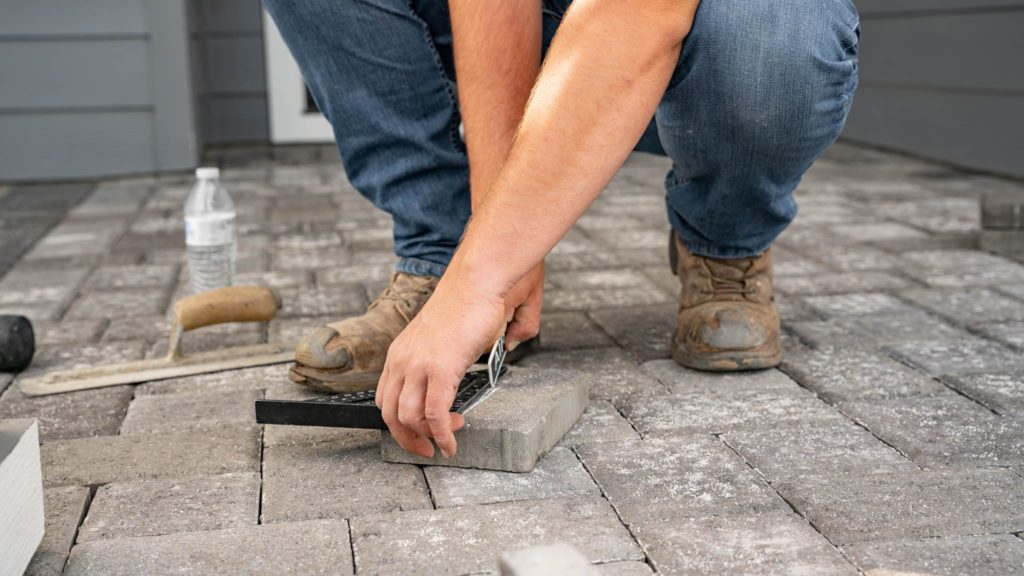
7. Sweep in your exterior articulation sand
For articulation sand, we use and recommend Surebond Polysweep Polymeric Articulation Sand. This sand is designed specifically for pavers, natural stone, cast stone, cobblestone, concrete overlays, and pool decks.
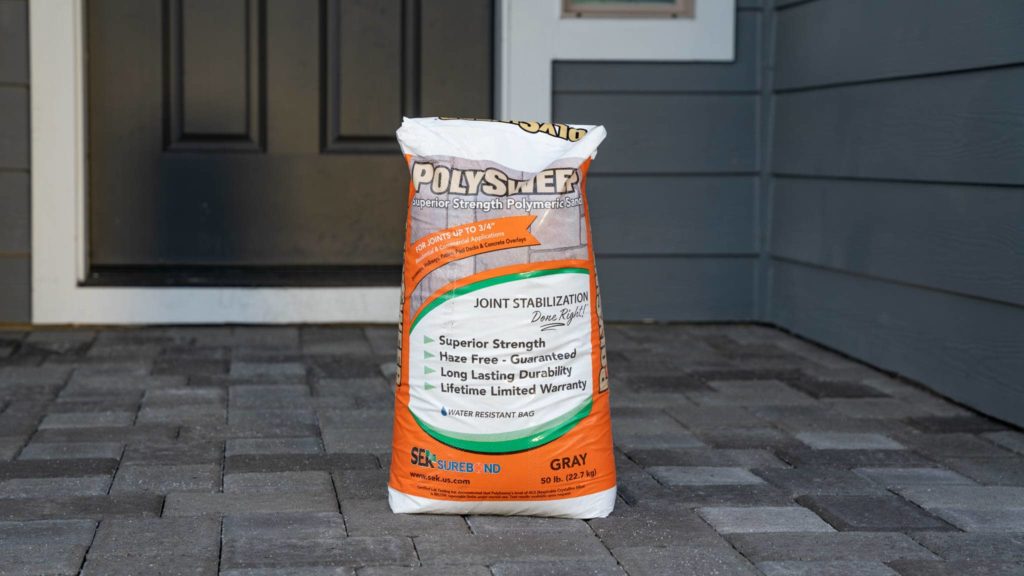
Polysweep Polymeric Sand is a blend of native sands conforming to ASTM C-144 standard, and binders to allow the joints to expand and contract with the elements such as extreme heat, extreme cold, and freeze/thaw cycles.
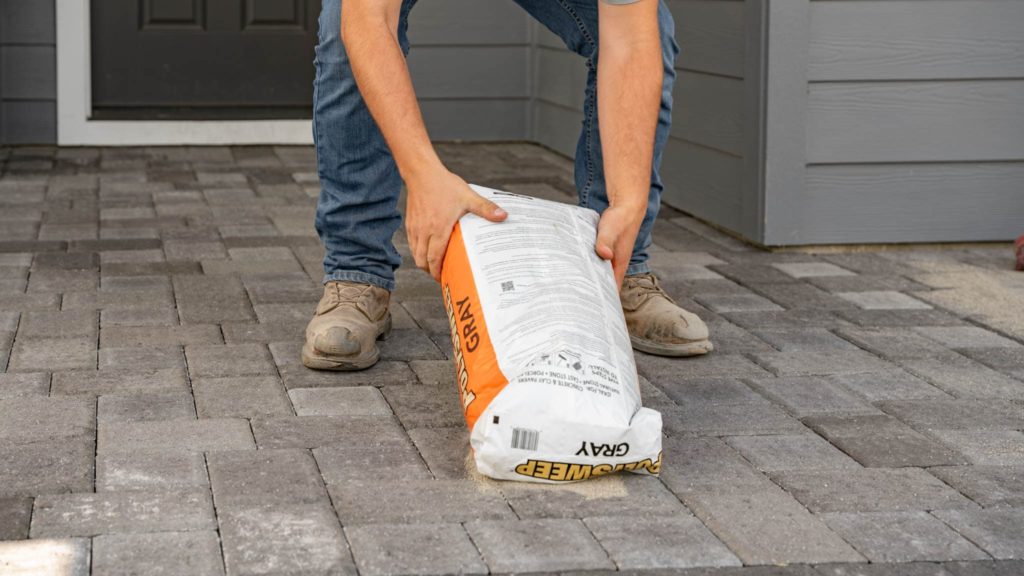
To install, you'll spread the sand evenly over your paver patio, using a shop broom to sweep in the sand. Spread it around, back and forth, until the sand has completely filled the joints. Once the joints are full, you'll want to blow or sweep off the excess sand and hit your paver patio with water to actuate the binders.
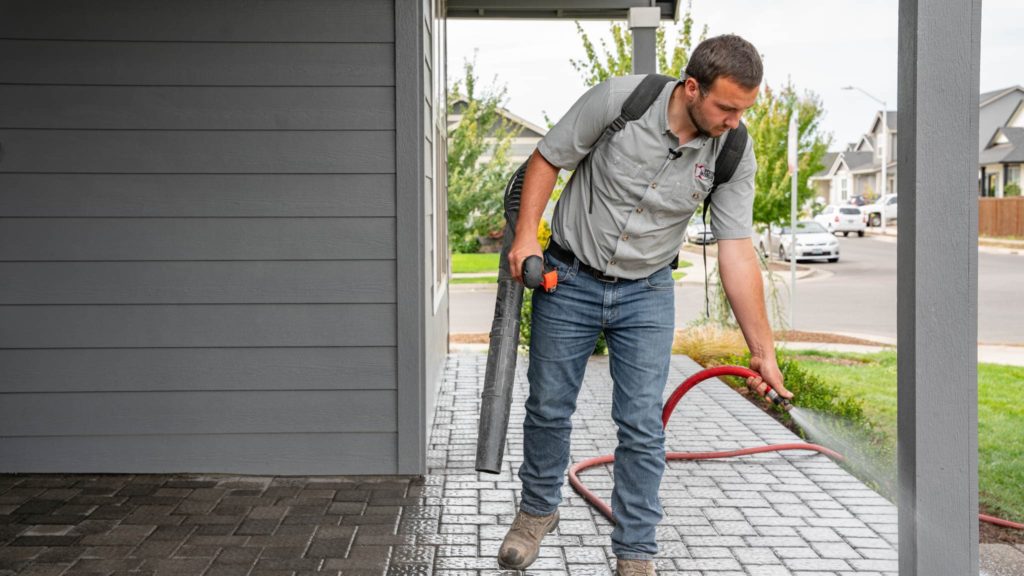
Lookout man or read our full tutorial on How To Use Polymeric Sand When Installing Pavers for more than data.
That's information technology! Y'all've installed patio pavers over your existing concrete patio or slab.
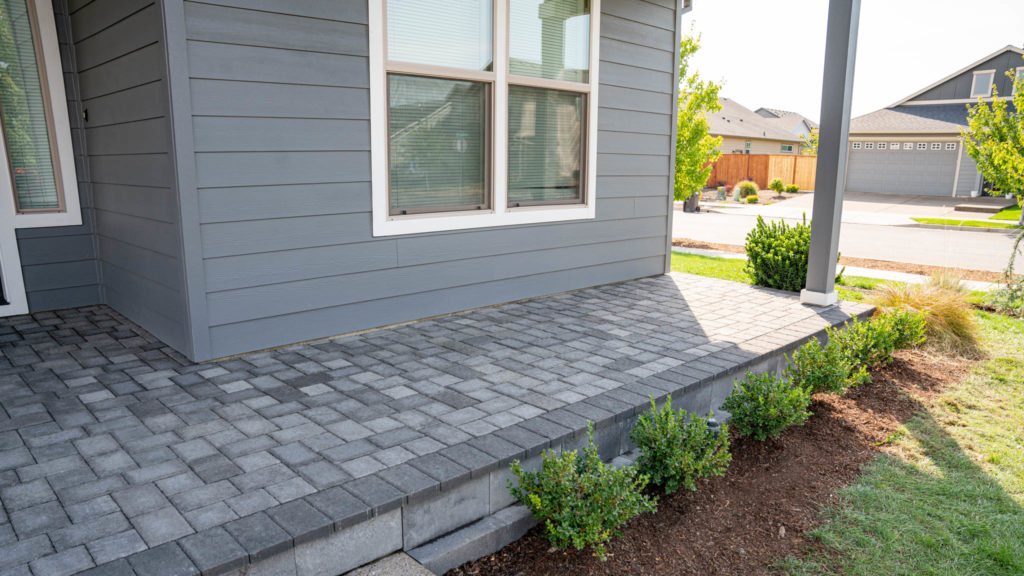
Accomplish any paver install project easily, by yourself
Hither at Western Interlock, we're on a mission to take the hard out of hardscaping. That'southward why we publish DIY tips, tricks, and stride-by-stride how-to tutorials at DIYwithWI.com.
If you lot accept whatsoever questions, you can visit our paving stone brandish at our manufacturing facility in Rickreall, Oregon. Or, requite us a call and speak with whatever one of our team of hardscape experts at 503-623-9084.
Source: https://westerninterlock.com/how-to-install-patio-pavers-over-an-existing-concrete-slab/
Posted by: santiagoimmays60.blogspot.com

0 Response to "Can We Cover A Concrete Slab With Decorative Stone?"
Post a Comment